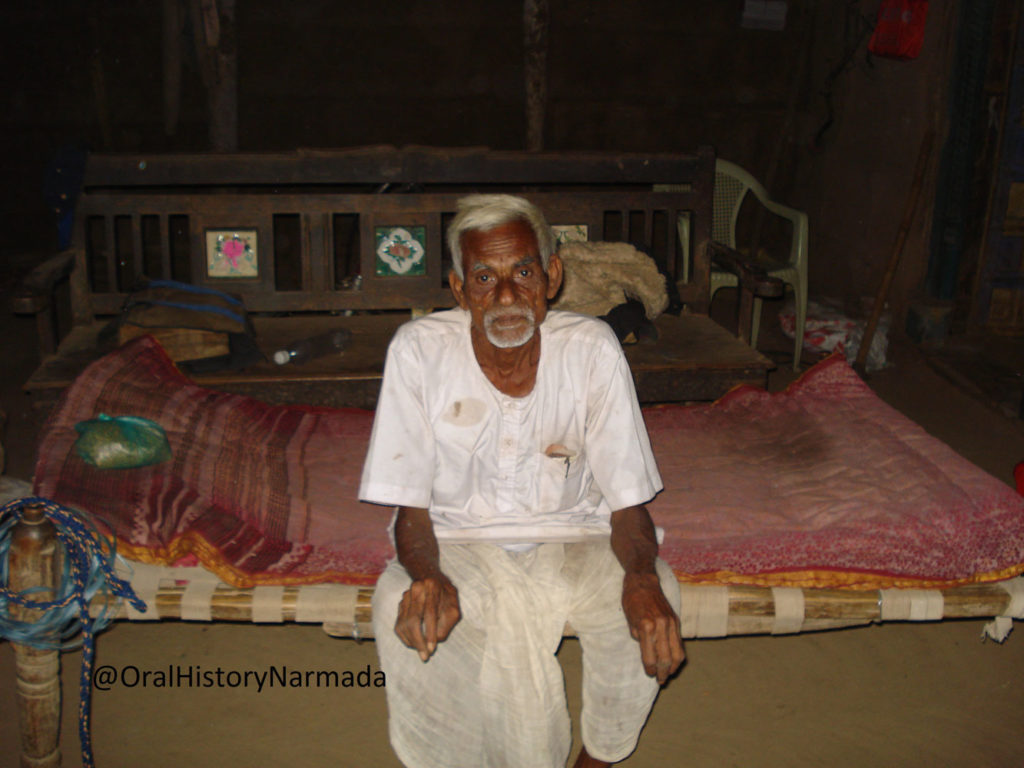Village Kevadia, Kevadia Colony, Gujarat.
~2 minutes
Muljibhai was a young man in 1961 when the foundation stone of the Navagam Dam (later to become the Sardar Sarovar dam) was laid by India’s first Prime Minister Pandit Nehru. It was then that the lands of six Adivasi villages were acquired for the Sardar Sarovar Project (SSP) colony which included the lands of Muljibhai’s village Kevadia for the landing of Pandit Nehru’s helicopter. He personally witnessed Nehru’s coming to Kevadia and the foundation stone ceremony at Navagam village nearby.
Muljibhai, a five time sarpanch (headman) of Kevadia, narrates the early history of the SSP dam. He tells us how Pandit Nehru came to Kevadia, how he laid the foundation stone of the project, how he made solemn promises to the adivasi people, how the scheduled tribes were dispossessed of their lands which were acquired for the project colony, how the people of the six villages waged their struggle in those early days, how the state responded to them, how state priorities changed, how the Ukai dam was built in response to the interstate water dispute between Gujarat and Maharashtra, [The Ukai dam is on the River Tapi, so not connected directly with the Narmada Water Dispute Tribunal] how the Kevadia Colony affected people networked with the Rajpipla Social Service Society and the Lok Adhikar Sangh, and finally, the formation of the Narmada Bachao Andolan.
Muljibhai’s interview helps us understand the emergence of the struggle in the Kevadia Colony affected villages of Gujarat after 1961 and the role that different people and organisations played in it.

Interview Duration:
00:34:24
Language:
Audio in Gujarati, Subtitles in English
Subtitles can be switched on and off by clicking ‘CC’ button at the bottom right of the video